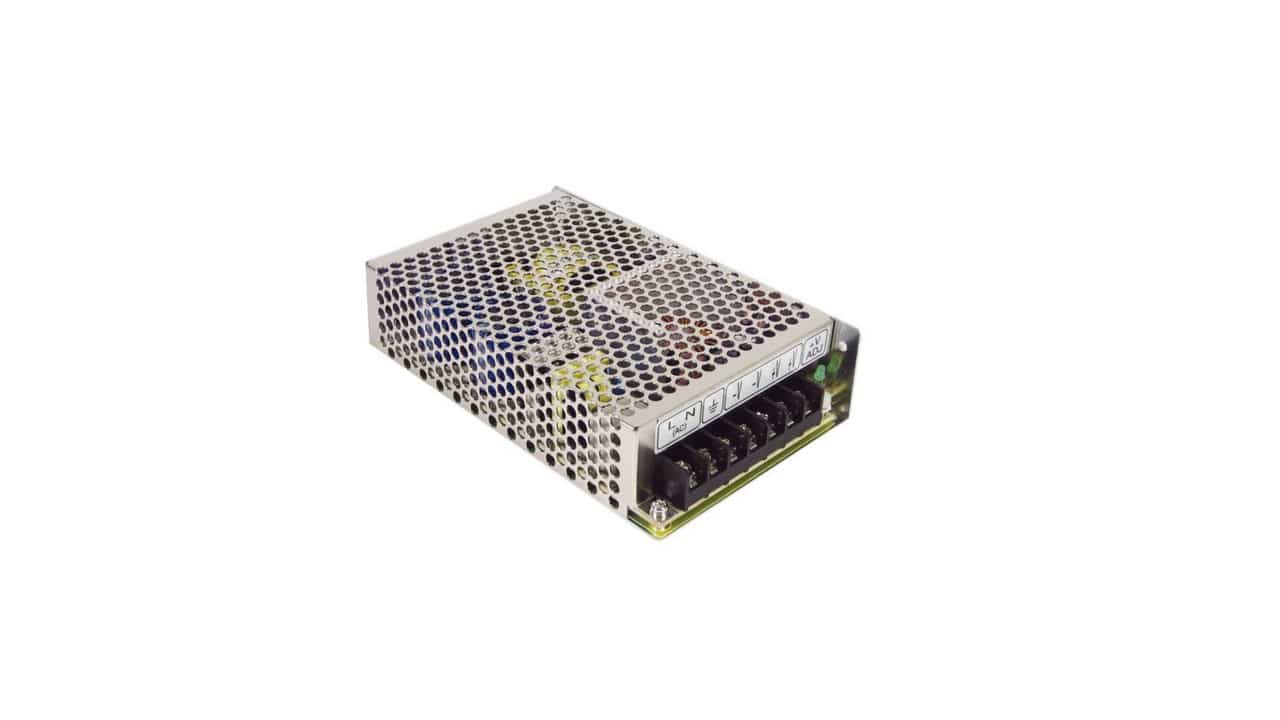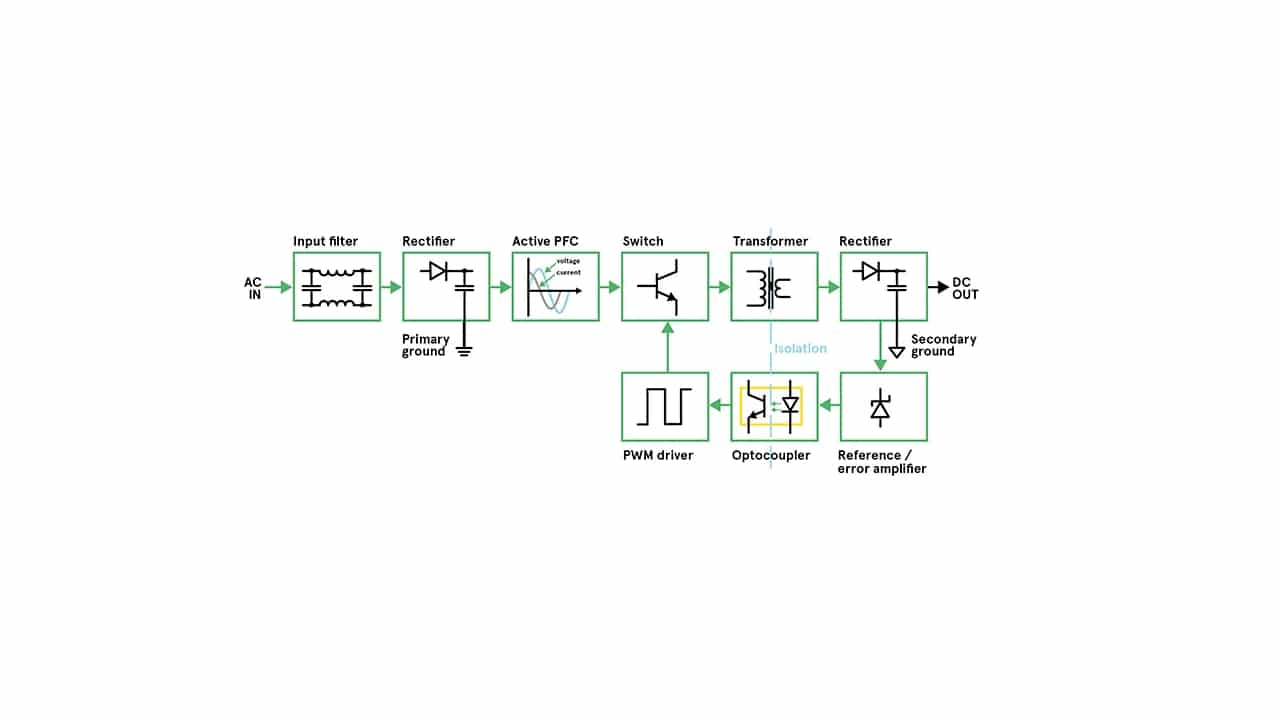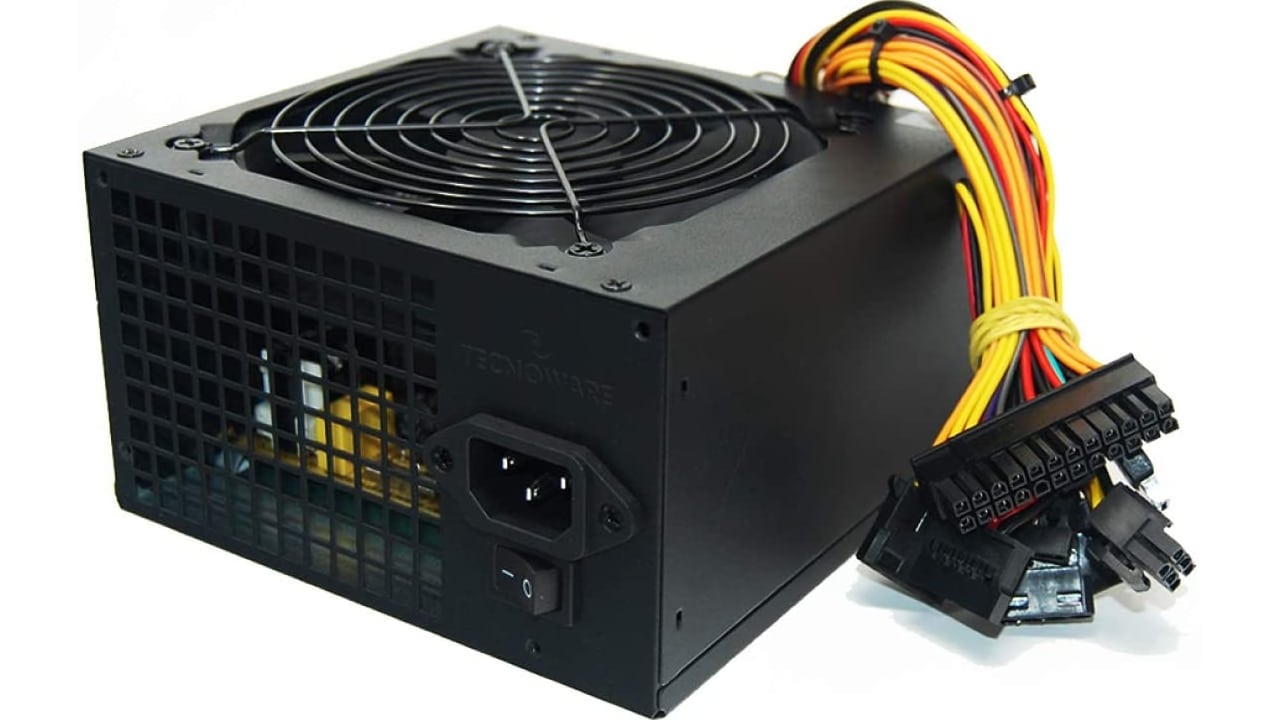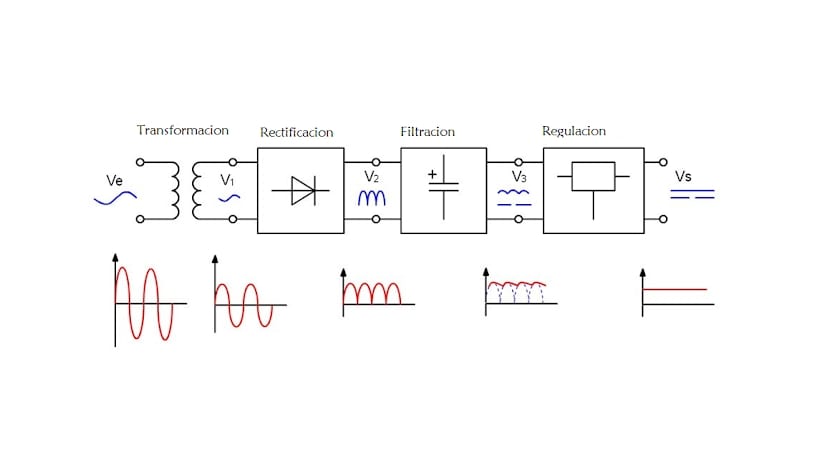
Una switched source is an electronic device capable of transforming electrical energy through a series of electric components, such as transistors, voltage regulators, etc. That is, it is a power supply, but with differences with respect to the linear ones. These sources are also known as SMPS (Switch Mode Power Supply), and are currently used for a multitude of applications ...
What is a power supply
Una power supply, or PSU (Power Supply Unit), is a device used to deliver electricity appropriately to different components or systems. Its purpose is to receive the energy from the electrical network and convert it to a suitable voltage and current so that the connected components can function properly.
The power supply will not only modify the voltage of its output with respect to its input, but it can also modify its intensity, rectify and stabilize it to transform from alternating current to direct current. That is what happens in a source of a PC, for example, or in the adapter to charge a battery. In these cases, the CA it will go from the usual 50 Hz and 220 / 240v, to a DC at 3.3v, 5v, 6v, 12v, and the like ...
Linear sources vs switched sources: differences

If you remember the adapters or chargers of the older telephones, they were larger and heavier. Those were linear power supplies, while today's lighter and more compact ones are switching power supplies. The differences:
- In a linear font the tension of the electrical current is reduced by means of a transformer, to later be rectified by gods. It will also have another stage with electrolytic capacitors or other voltage stabilizers. The problem with this type of transformer is the loss of energy in the form of heat due to the transformer. In addition, this transformer not only has a heavy and bulky metal core, but for high output currents they will need a very thick copper wire winding, thus also increasing the weight and size.
- All the switched sources They use a similar principle for the process, but it has differences. For example, in these cases they increase the frequency of the current, going from 50 Hz (in Europe), to 100 Khz. This means that losses are reduced and the size of the transformer is greatly reduced, so they will be lighter and more compact. To make this possible, they transform AC into DC, then from DC to AC with a different frequency than the initial one, and then they transform said AC back to DC.
Today, linear power supplies are practically they have disappeared, due to its weight and size. Now switched are used more in all kinds of applications.
Therefore, highlights depending on the basic way of working, they are:
- El size and weight of the linear ones can be significant, with up to 10 kg in some cases. While the switched ones, the weight can be only a few grams.
- In the case of Output voltage, linear sources regulate the output using higher voltages from previous stages and then producing lower voltages at their output. In the case of the switched mode, they can be equal, lower, and even inverted than those of the input, making it more versatile.
- La efficiency and dissipation It also differs, since the switched ones are more efficient, making better use of energy, and they do not dissipate as much heat, so they will not need such large cooling systems.
- La complexity it is somewhat higher in the switched due to the greater number of stages.
- Linear fonts do not produce interferences generally, so they are best when interference should not occur. The switched one works with higher frequencies, and that is why it is not so good in this sense.
- El power factor of linear sources is low, because power is obtained from the voltage peaks of the power line. This is not the case in switched ones, although previous stages have been added to correct this problem to a great extent, especially in devices sold in Europe.
Operation

Source: Avnet
To understand well the operation of the switching source, its different stages must be schematized as blocks, as can be seen in the previous image. These blocks have their specific function:
- Filter 1: it is responsible for eliminating the problems of the electrical network, such as noise, harmonics, transients, etc. All of this can interfere with the operation of powered components.
- Rectifier: its function is to avoid that the part of the sinusoidal signal passes, that is, that the current only passes in one direction, generating a wave in the form of a pulse.
- Power factor corrector: if the current is out of phase with respect to the voltage, all the power of the network will not be used well, and this corrector solves this problem.
- Condenser- The capacitors will dampen the pulse signal coming out of the previous stage, storing the charge and making it come out much flatter, almost like a continuous signal.
- Transistor / Controller: it acts as a control of the passage of current, cutting and activating the passage, which transforms the previous almost flat current into a pulsating one. Everything will be controlled by the controller, which can also act as a protective element.
- Transformer: reduces the voltage at its input to adapt it to a lower voltage (or several lower voltages) at its output.
- Diode: it will convert the alternating current coming out of the transformer into pulsating current.
- Filter 2: it goes from pulsating current to again in a continuous one.
- Optocoupler: it will link the source output with the control circuit for correct regulation, a kind of feedback.
Types of sources
Switched sources can be classified into four type fundamental:
- AC input / DC output: It consists of a rectifier, commutator, transformer, output rectifier and filter. For example, the power supply of a PC.
- AC input / AC output: it simply consists of a frequency inverter and a frequency converter. An example of application would be an electric motor drive.
- DC input / AC output: It is known as an investor, and they are not as frequent as the previous ones. For example, they can be found in generators of 220v at 50Hz from a battery.
- DC input / DC output: it is a voltage or current converter. For example, like some battery chargers for mobile devices used in cars.


Let's say. With this source you can make an invert welder. No ??